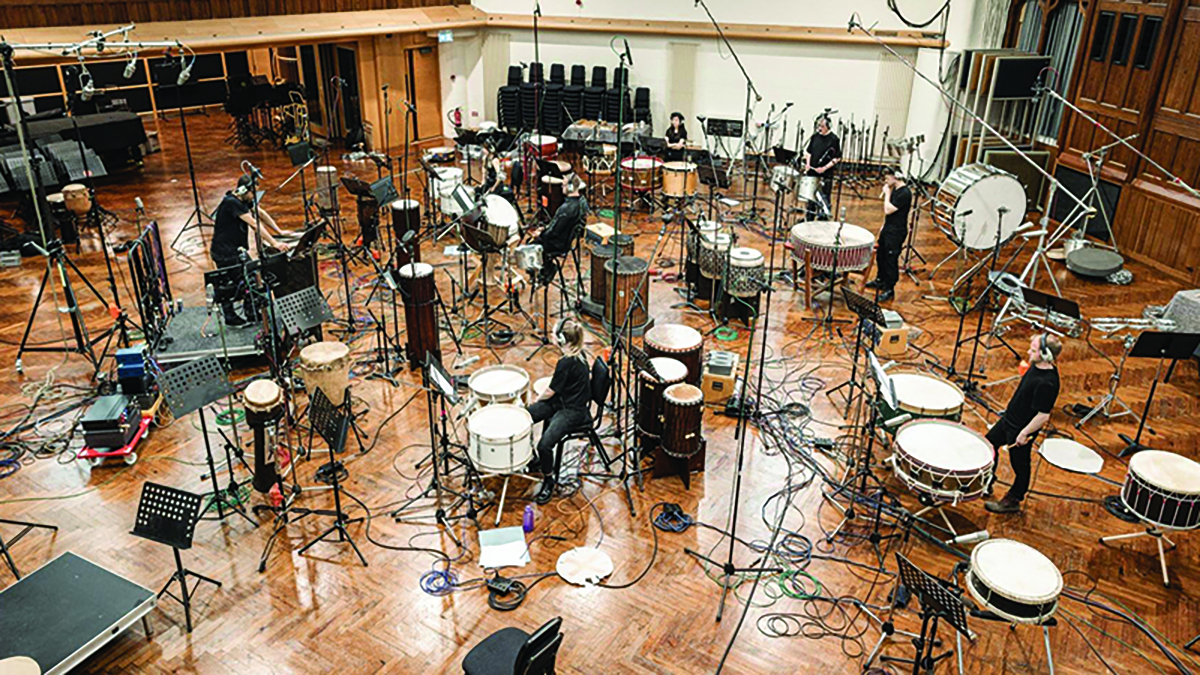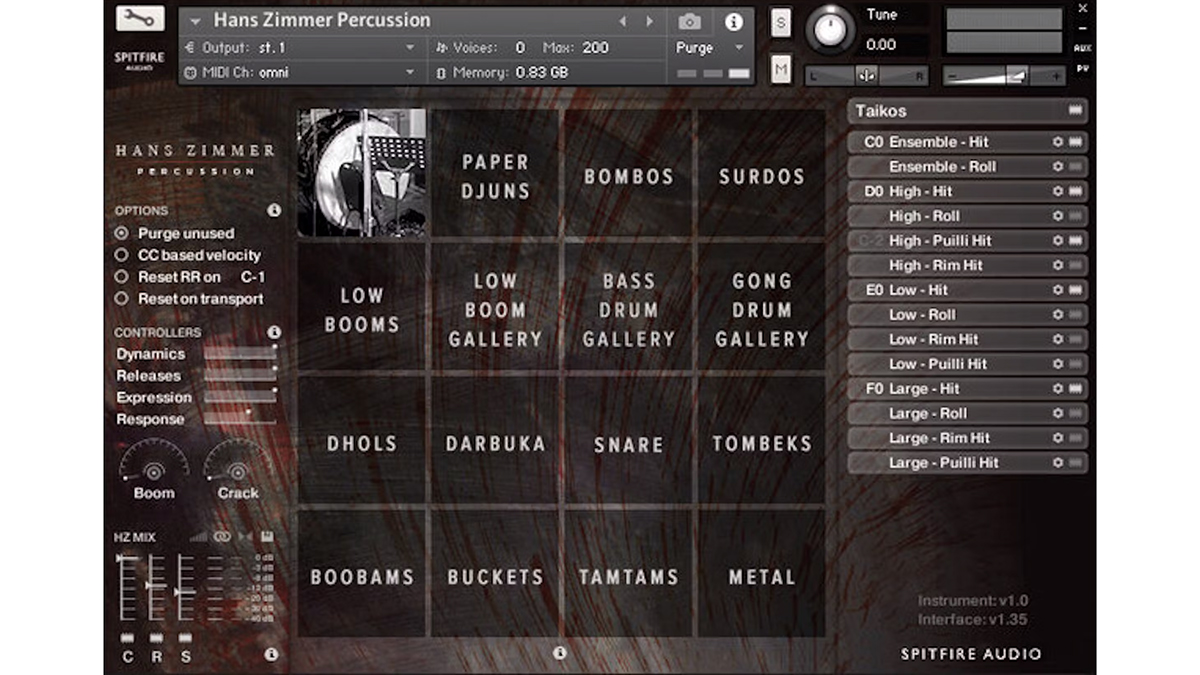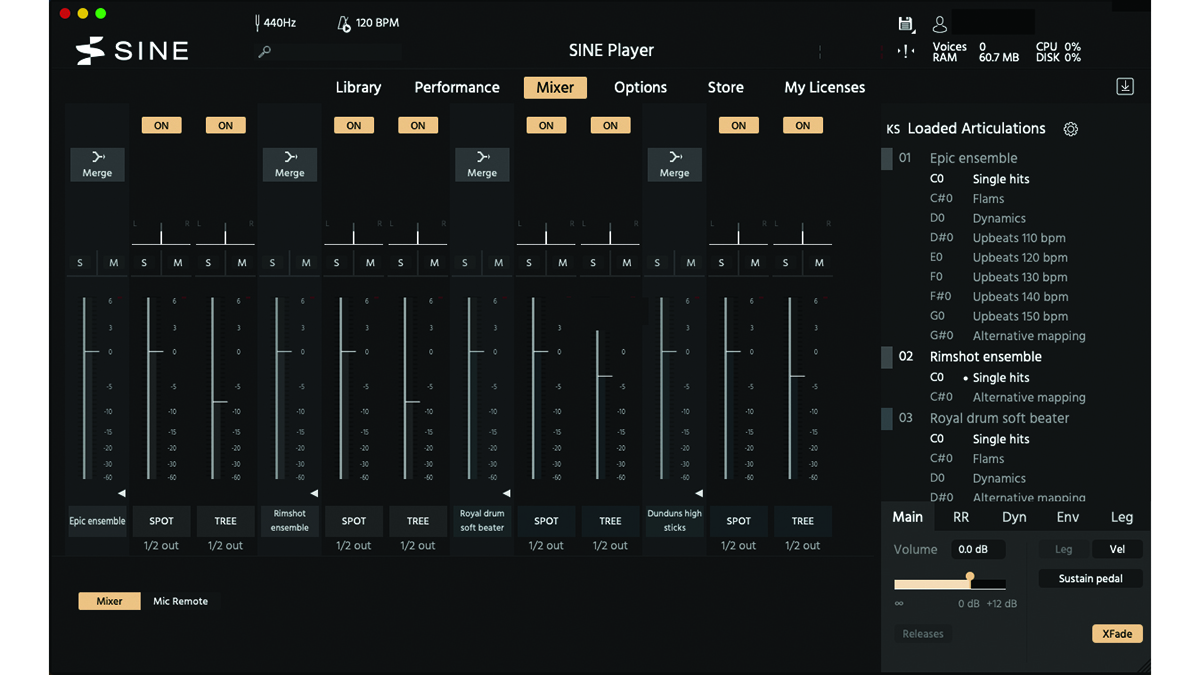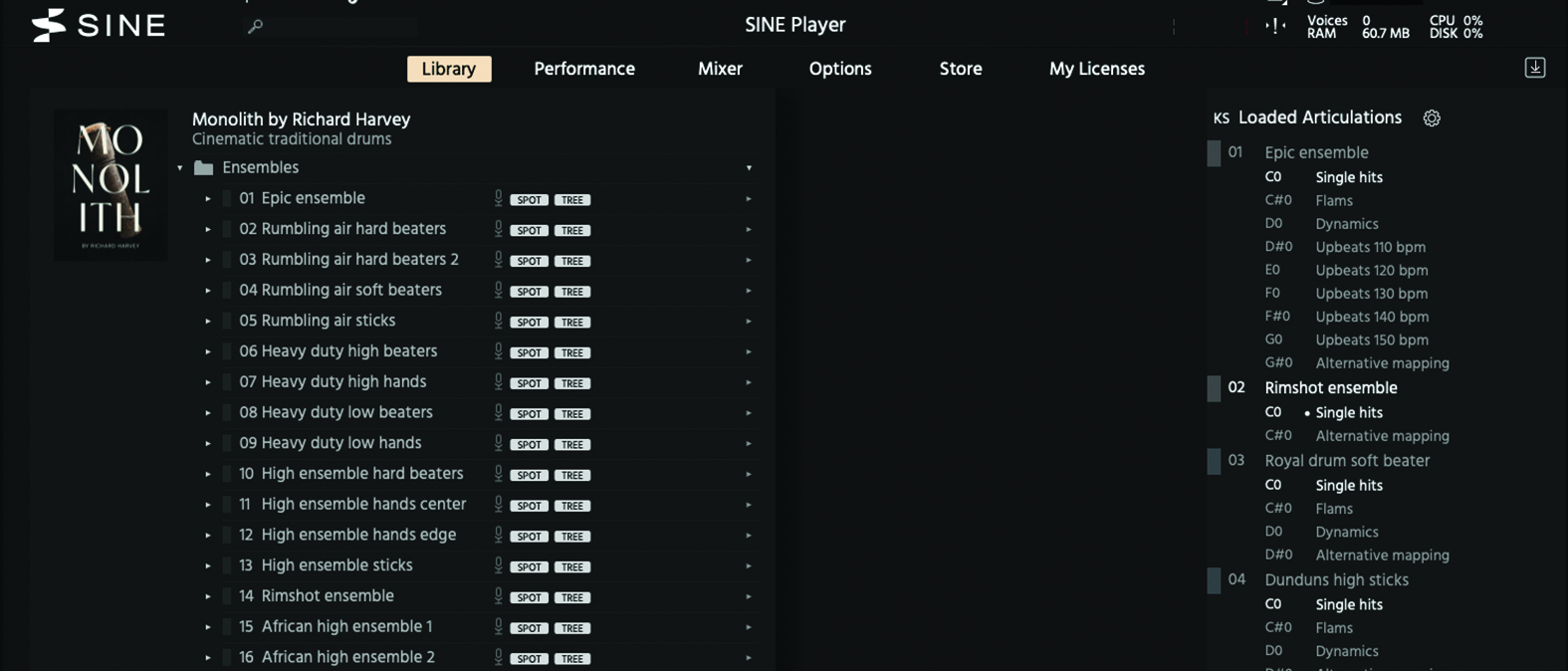MusicRadar Verdict
This is about as complete as a cinematic drum library can be, with a unique collection of highly impressive instruments.
Pros
- +
Extensive collection of sampled cinematic drums.
- +
The Ensemble patches are exceptionally versatile in terms of usability.
Cons
- -
No MIDI or pattern content.
- -
You’ll have to be musical with your playing, to avoid sample repetition.
MusicRadar's got your back
Orchestral Tools Monolith: What is it?
Over the last 20 years, there has been a seismic shift in the compositional and production output of soundtrack and trailer music. Informed by Hollywood’s elite composers, as well as video game music, dramatic scoring has become increasingly reliant on percussion, and plenty of it!
Monolith could be regarded as the percussion library to end all libraries, in part due to its beautifully excessive scale. This is the next phase of the partnership between composer and musician Richard Harvey and Orchestral Tools, which has offered us some real sampled gems in the past. As a musician and composer, it is Harvey’s collection of rare and antique percussion instruments that has provided the 53-instrument backbone for this library. As Harvey himself states, this is the first time all of his instruments have been laid out and recorded as a collection.
In a slight break from tradition, Orchestral Tools has opted to record Monolith in the Lyndhurst Hall at AIR Studios, rather than the usual domain of the Teldex Scoring Stage. However, OT is careful to point out that the two acoustics complement each other well, should you have other Teldex-based libraries.

Orchestral Tools Monolith: Performance and verdict
Monolith launches within the freely downloadable OT Sine instrument. The drums have been organised into three categories; Ensembles, Single instruments and Processed instruments.

• Spitfire Audio Hans Zimmer Percussion
This entry-level library carries the bombastic signature of Zimmer, with a dynamic register to match!
• Sampleson Drumbada
High-quality polyrhythmic grooves, perfect for soundtrack use.
The Ensemble patches are designed to sound vast, while the individually sampled instruments are ideal for solo use, or as an accompaniment to the ensembles.
Beginning with the single-instrument samples, 39 patches range from common orchestral bass drums through to Taiko, Dundun and Royal Drum. There is huge diversity of drum size, with articulations ranging from hard and soft beaters to hands and flams. The instruments also offer key-switching of multi-articulation patches, from the lower octave of the keyboard. Dual independent sample zones allow you to play and trigger in a rudimentary manner, as any percussionist may choose to play. There is no MIDI or groove-based content, meaning that you have to get creative with your own percussive programming.
One of the most notable aspects of this library is its vast dynamic range. While many will associate a library of this kind with large-scale scoring, there is an extraordinary amount of range in the lower dynamic end. This can be very effective, as the larger drums produce some amazing sonorities at quieter dynamics, without overpowering.
Want all the hottest music and gear news, reviews, deals, features and more, direct to your inbox? Sign up here.
The ensemble patching is undeniably impressive. The 29 patches have all been recorded as a group, meaning that you hear all of the character of the Lyndhurst Hall, along with the close miking. Much like the individual instruments, there is incredible diversity across the instrument groupings, both in terms of frequency and dynamic range. African drums nestle alongside Roto-toms and larger drum batterie. The opening patch, which is labelled Epic Ensemble, does exactly what it says on the tin. It’s highly impressive sonically, combining definition with deep sorority. Additional articulations are also included in the shape of Upbeats and Flams, at various tempos.

Mics and processing
Apart from the ensemble and single-instrument patching, OT has also included processed patching. While the name conjures images of electronic trickery, much of the content merely explores additional playing styles and articulations. There are lots of high-pitched sounds, particularly elements such as stick-clicks, which can be exceptionally useful when played alongside the more mainstream content. The samples are presented in the same way, using a dual zone arrangement, which makes playing the samples very easy.
There is also a simplified mixer arrangement, allowing the blending of a close signal, with a more reverberant distant signal. This could be useful for two different reasons; if you like the acoustic at AIR, you will thoroughly enjoy having the control over this element as a separate entity, however many media composers yearn for a drier environment, which can be provided by the close-mic setup. Whichever scenario, you have control to dictate the results you require.
A percussion odyssey
There are a considerable number of unique factors that make this library a substantial success. The uniqueness of the included instrumentation, coupled with a composer's eye for the most useful instrumentation and articulation, has resulted in a collection which is both substantial and exceptionally usable for a number of scenarios. Our only misgiving is that, with such capacity for impressive ensemble performance, it’s a shame that some form of pattern content was not included, but that will force us to be more creative in the way we use the supplied instrumentation.
MusicRadar verdict: This is about as complete as a cinematic drum library can be, with a unique collection of highly impressive instruments.
Orchestral Tools Monolith: Hands-on demos
Orchestral Tools
Jesse Haugen
The Sampleist
Orchestral Tools Monolith: Specifications
- macOS 10.13 or higher. Intel Core i5 or similar. Apple M1 chipset supported.
- Windows 10. Intel Core i5 or similar.
- Works with Orchestral Tools’ SINE Player.
- CONTACT: Orchestral Tools
Roland Schmidt is a professional programmer, sound designer and producer, who has worked in collaboration with a number of successful production teams over the last 25 years. He can also be found delivering regular and key-note lectures on the use of hardware/software synthesisers and production, at various higher educational institutions throughout the UK




